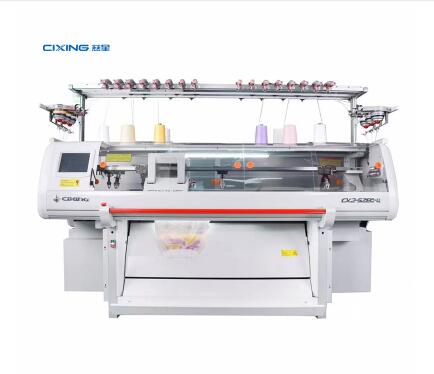The Future of Flat Knitting Technology: Innovations on the Horizon
2024-11-20
Flat knitting technology has long been a cornerstone of the textile industry, providing the flexibility to create intricate patterns and customized designs. With rapid advancements in technology and growing demand for sustainable, efficient, and personalized products, flat knitting machines are poised for a revolution. This blog explores the innovations shaping the future of flat knitting technology and their implications for the industry.
1. Integration of Smart Technology
The textile industry is embracing Industry 4.0, and flat knitting machines are no exception. Smart technologies, including sensors, IoT, and AI, are being integrated into knitting machines to optimize performance. Key advancements include:
- Predictive Maintenance: Sensors monitor machine components in real-time, predicting failures before they occur, reducing downtime, and extending machine life.
- Automation and AI: Machines equipped with AI can analyze patterns and adjust settings autonomously, enabling faster production with minimal human intervention.
- Remote Monitoring: IoT-enabled knitting machines allow operators to monitor and control production remotely, increasing efficiency and convenience.

2. Advanced Materials and Yarn Compatibility
Innovations in material science are expanding the range of yarns that flat knitting machines can handle. Future machines are expected to knit with:
- Conductive Yarns: Used in the production of smart textiles and wearable technology.
- Biodegradable and Recycled Materials: Supporting sustainability initiatives in fashion.
- High-Performance Fibers: Such as carbon or aramid fibers, enabling applications in industries like aerospace and automotive.
3. Seamless Knitting for Complex Designs
Seamless knitting, already a game-changer in flat knitting, is evolving further. Advanced knitting machines can now create fully-fashioned garments without seams, reducing material waste and production steps. This innovation benefits industries such as sportswear, where seamless designs improve comfort and functionality.
4. Customization and On-Demand Manufacturing
The demand for personalized and on-demand fashion is transforming the knitting industry. Future flat knitting technology will focus on:
- Rapid Prototyping: Machines that quickly produce samples for customized designs, reducing time-to-market.
- Digital Pattern Libraries: Enabling designers to upload and modify patterns digitally, streamlining the design process.
- Small Batch Production: Efficiently producing one-off or small-run garments, catering to niche markets.
5. Sustainability and Eco-Friendly Production
Sustainability is at the forefront of innovation in flat knitting technology. Future advancements include:
- Zero-Waste Knitting: Machines that precisely calculate material requirements, minimizing waste.
- Energy-Efficient Systems: New motors and control systems that reduce energy consumption.
- Closed-Loop Processes: Machines capable of recycling fibers from unused or old textiles directly into new garments.
6. Enhanced User Interfaces
Next-generation flat knitting machines will feature intuitive user interfaces, making them accessible to a wider audience. Innovations include:
- Touchscreen Displays: Simplifying machine programming and operation.
- AI-Driven Recommendations: Suggesting optimal settings and yarn combinations based on the desired outcome.
- Real-Time Feedback: Providing insights into production progress and quality control.
7. Applications Beyond Fashion
Flat knitting technology is expanding into non-traditional applications, including:
- Technical Textiles: Producing components for automotive interiors, medical devices, and industrial applications.
- Smart Fabrics: Enabling the integration of sensors and electronics directly into knitted garments.
- Architectural Textiles: Creating lightweight, durable materials for building facades and interiors.
8. Collaborative Innovations
Collaboration between machine manufacturers, textile companies, and tech firms is driving innovation. Partnerships are focusing on:
- Developing Smart Knitting Ecosystems: Combining hardware, software, and materials for holistic solutions.
- Open-Source Platforms: Allowing designers and engineers to contribute to knitting technology advancements.
Conclusion
The future of flat knitting technology is bright, driven by advancements in automation, material science, sustainability, and user-friendly design. These innovations will not only enhance efficiency and creativity but also open new markets and applications. As the industry continues to evolve, flat knitting technology will remain a vital tool in shaping the textiles of tomorrow.
---
Call to Action
Whether you're a designer, manufacturer, or enthusiast, now is the time to explore how these emerging innovations can transform your craft. Stay ahead of the curve and embrace the exciting possibilities of the future of flat knitting!


